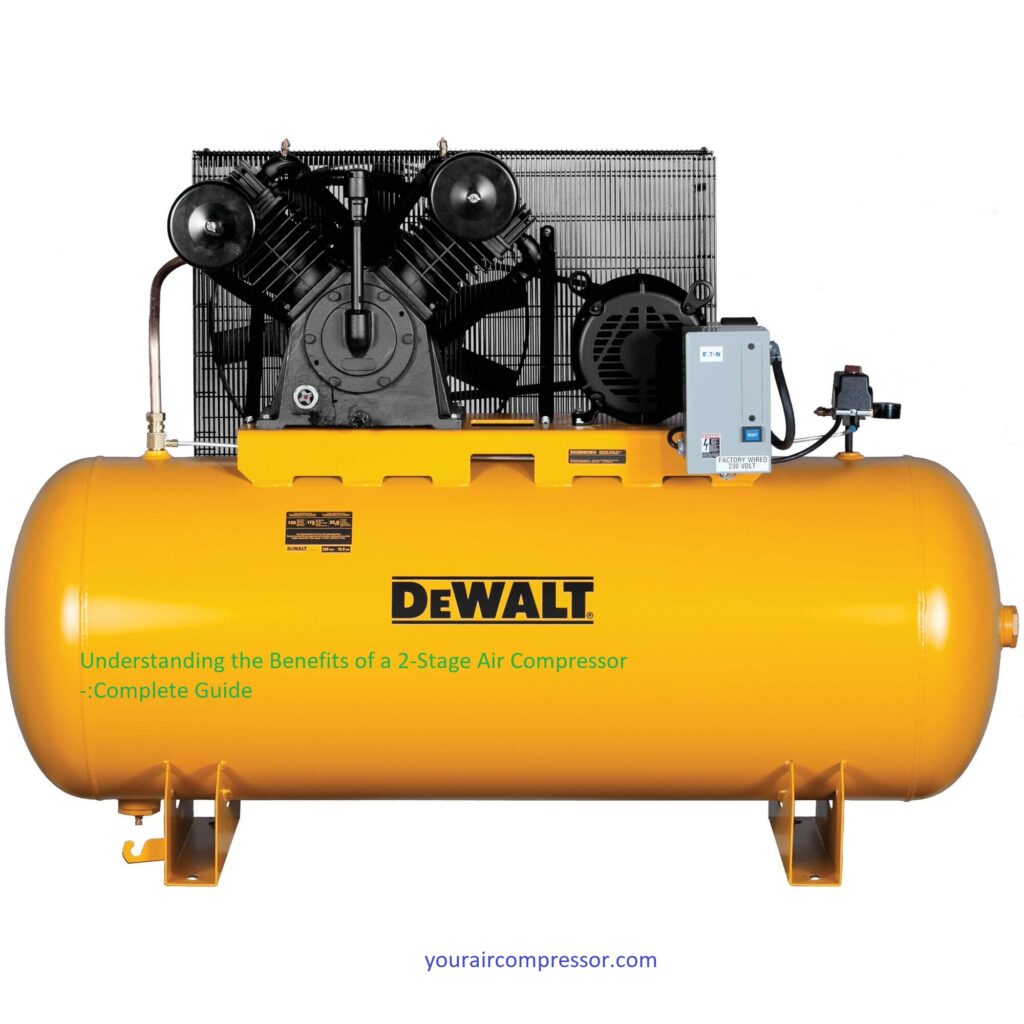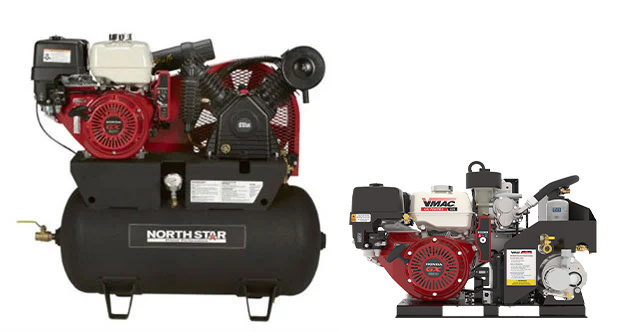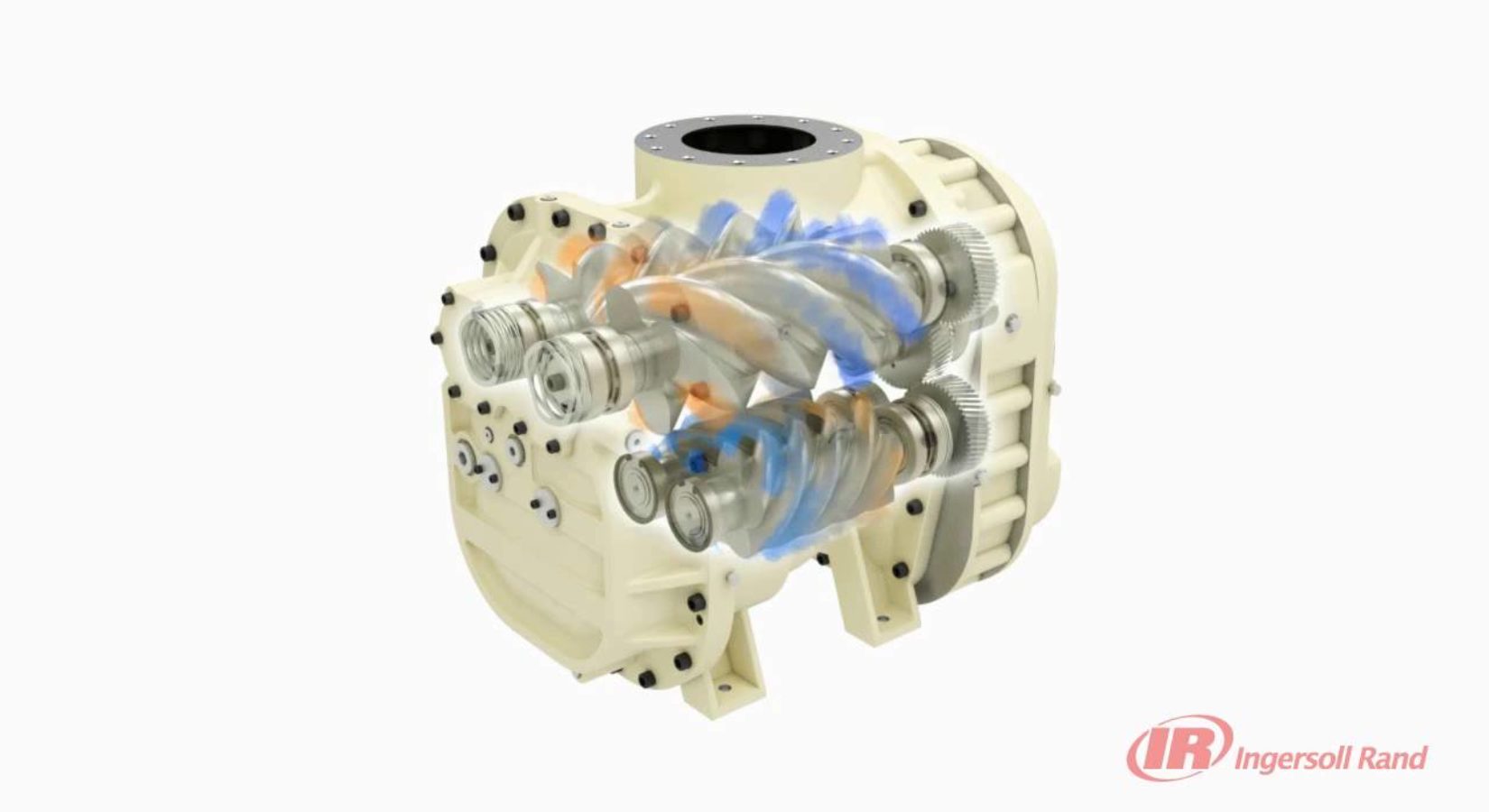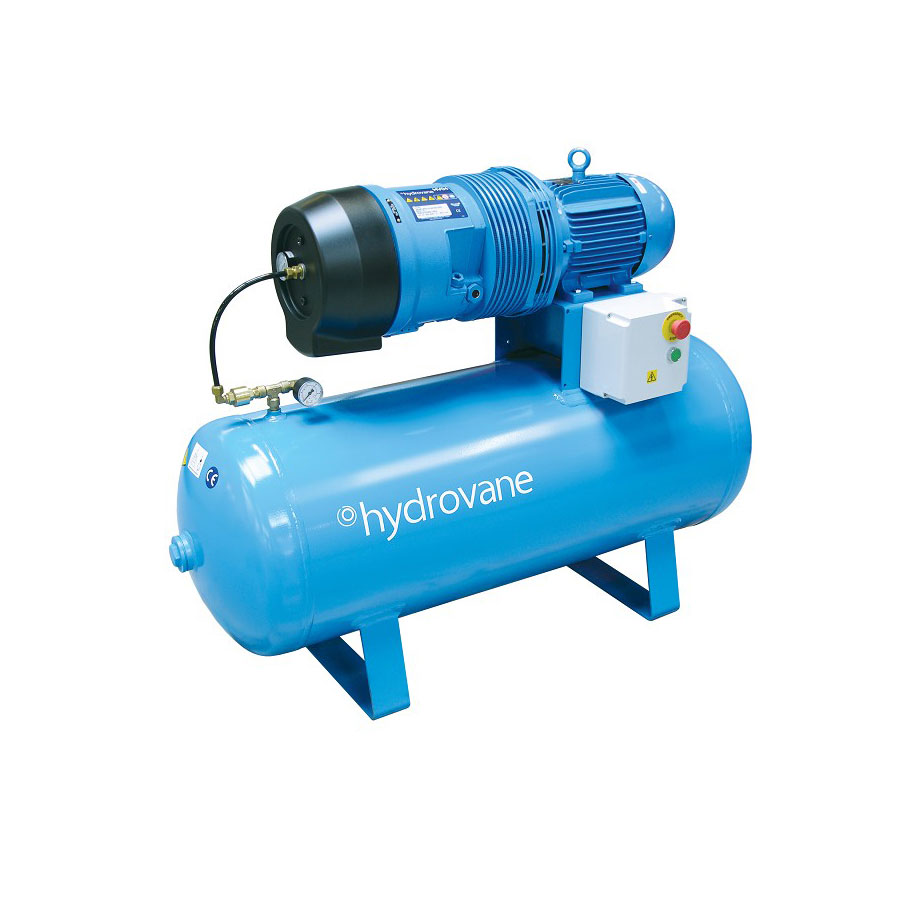 Are you looking for a more efficient air compressor? You’re in luck. A 2-stage air compressor can provide you with numerous benefits compared to traditional single-stage compressors.
Are you looking for a more efficient air compressor? You’re in luck. A 2-stage air compressor can provide you with numerous benefits compared to traditional single-stage compressors.
In this comprehensive guide, we’ll explore how a 2-stage compressor can help you get the most out of your air applications.
When it comes to choosing the right air compressor for your home or business, there are a variety of options available. For those who require more power and efficiency, a 2-stage air compressor may be the right choice. With a 2-stage compressor, you take advantage of many different benefits that can make your working tasks easier and faster while also getting more out of your investment.
In this guide, we’ll discuss what to consider when deciding whether a single or two stage air compressor is right for your needs. We’ll also explore some of the key features of a 2-stage system, including how they improve performance and reduce costs over time. Lastly, we’ll offer suggestions on where to buy quality 2-stage compressors at fair prices and provide tips for maintainence and repair in order to get the most out of your purchase.
Definition of 2-stage air compressor
A two-stage air compressor is a type of compressor which can be used to pump compressed air into a system or machinery. An air compressor has two main parts; the compression chamber and the release chamber. As the motorized piston moves back and forth through the compression chamber, it gradually builds pressure inside until it forces out any remaining air from the exhaust valve located at one end. This process is called “compression”. The release chamber operates at a higher pressure than the compression chamber, making it more efficient for pumping large amounts of compressed air for industrial use.
Two-stage compressors typically feature several key components that make them convenient for many applications. They feature an onboard cooling system that can help prolong the life of the machine’s components, as well as reduce noise levels associated with operation. A two-stage machine may also include built-in oil filters that are important for preventing wear and tear on internal components. Additionally, they may feature automatic shutdown functions in order to conserve energy when not in use. All these features make two-stage air compressors an ideal choice for powering pneumatic tools and powering industrial machinery in factories or other commercial settings.
Importance of using an air compressor
An air compressor is a device that uses electricity or an internal combustion engine to force air into a storage tank, which can then be released in moments of increased power demand. A lot of people might have the misconception that air compressors are mainly used for inflating tires, but there is a far more extensive list of usage types. Air compressors are used in many industries and businesses, including automotive service centers and manufacturing plants.
An air compressor operates on the principle that quickly compressing and storing a large amount of air can provide much higher power than could be generated naturally by one or several large engines. This makes it ideal for manufacturing applications, where the bursts of stored compressed air are occasionally released to help guide components or drive equipment with great accuracy and speed.
Air compressors can also offer environmental advantages when used in place of conventional fuel sources. Compressed air requires no fossil fuels, helps contain pollution levels, and helps reduce operating costs. In the long run, such efficient use of energy can result in significant reductions in carbon emissions, thus making an air compressor an environmentally friendly addition to any workplace regardless of scale or complexity.
How does a 2-stage air compressor work?
A two-stage air compressor works by compressing air in two stages rather than one. In the first stage, compressed air passes through a double cylinder set as it is drawn in from the outside atmosphere. Here, the intake pressure is lowered and the temperature reduced to avoid damaging parts of the system.
In the second stage, more compression takes place as the air passes through an additional cylinder set and is further pressurized. This increases potential energy and results in higher levels of PSI available for use with pneumatic tools or tanks. The two-stage compression process also leads to lower temperatures which prevents overheating and damage to equipment. It can also add longevity as there will be less friction wear on internal components, resulting in a longer compressor life cycle and greater efficiency overall.
Components of a 2-stage air compressor
A 2-stage air compressor has two main parts that work together to pressurize air. The first component is the intake valve, which sucks in a low-pressure stream of air at atmospheric pressure. The second component is the compression chamber, which compresses the air to a much higher pressure than what was originally taken in. This compressed air can then be released either through a discharge valve at the end of the chamber or through a hose connected to an output port.
The components of a 2-stage air compressor include:
- Intake Valve – this valve intakes low-pressure, atmospheric air into the chamber for compression
- Compression chamber – this is where incoming unpressurized atmospheric air is raised up to an operational pressure with the help of mechanical energy
- Discharge Valve – this allows for compressed air created inside the compression chamber to flow out once it has reached its desired operational pressure
- Output Port – this port connects other tools, such as an impact driver or paint sprayer, to receive compressed airflow from the compressor.
Function of each component
In order to understand the benefits of a 2-stage air compressor, it is important to understand the function of each component. A regular two-stage air compressor is comprised of two cylinders – the first stage and second stage.
The first stage has a high pressure cylinder that compresses air from atmospheric pressure (1 bar) up to the maximum intake pressure (11 bar by ISO 1217 standard). This is accomplished by a series of blades that force air through an intake valve and then into the cylinder. Once inside, a piston acts upon the air, compressing it until pressure reaches 11 bar. At this point, the exhausted air is cooled before entering into the second stage cylinder which replicates this initial process, compressing what is known as intermediate or “transfer” pressure in order to reach 11 bar within its own chamber.
The final result is two stages of compression at up to 11 bar in each case; providing an end product with no contaminants or water droplets as well as maintaining quiet operations due to its inherent nature. Additionally due to cumulative effect caused by having two stages working on different pressures, overall efficiency increases allowing for greater energy savings compared with traditional one stage compressors.
Benefits of using a 2-stage air compressor
A two-stage air compressor is a type of air compressor that is capable of providing higher levels of compressed air pressure with fewer operating costs. Two-stage compressors utilize a two-step process to compress the same amount of air in less than half the time it would take a single-stage compressor. The efficiency and effectiveness of this system increases efficiency and decreases energy consumption, resulting in superior performance over conventional single-stage models. In addition, many two-stage compressors feature adjustable pressure settings and differential pressure regulators, allowing the user to easily adjust the operating characteristics to match specific applications.
Other benefits include:
- Increased cycle times, resulting in less wear on parts and reduced consumption of electricity
- Higher discharge pressures offering improved performance and more torque
- Lower exhaust temperatures requiring fewer cooling fins (which translates into less noise)
- Easily adjusted pressure settings suitable for multiple applications
- Differential regulator featuring two distinctly different methods of regulating discharge pressure (boost or lockout)
- Compact size and lower overall weight than other types
Higher efficiency and productivity
A 2-Stage air compressor has the benefit of providing higher efficiency and productivity compared to single-stage compressors. The reason for this is that when operating on a two stage unit, air is compressed in two stages as opposed to just one. In the first compression stage, air is compressed by components and then cooled by an aftercooler before reaching the second stage of compression.
This cooling process occurs before the second production offering cooler, denser compressed air that is ideally suited for high velocity and power applications. This provides the user with longer run times and fewer cycles of operation because less energy is consumed throughout operation. Since air does not heat up as much during the process, it eliminates downtime due to regular maintenance needed for single-stage compressors and results in increased performance levels with greater output capacities over time.
Increased power and pressure
Two-stage air compressors provide more power than their single-stage counterparts by enabling higher pressure and faster recovery. A two-stage compressor operates in two separate sections — the low-pressure stage where the air is compressed, and the high-pressure stage in which the pressure is increased even further. This process produces twice as much air pressure as a single stage machine and can be used to operate tools that require more power or greater levels of compressed air.
The result of using a two-stage compressor is a higher CFM rating, or cubic feet per minute output, which allows for faster recovery times when using pneumatic tools. Two-stage machines are also highly efficient and reach a maximum pressure faster than single stage compressors — this in turn cuts down on noise and energy consumption. In addition, due to their design, two-stage compressors typically last longer than single stage machines, making them more cost effective over time.
Maintenance tips for a 2-stage air compressor

Maintaining a 2-stage air compressor will keep it running smoothly and efficiently and much longer. With a little care, you can make sure your compressor lasts for years to come. Here are some tips:
- Check the oil level regularly – The oil level should be checked at least twice a month to ensure a proper mix of air and oil. Be sure to replace or add any necessary oil if the existing levels are low.
- Keep the intake free of obstructions – Make sure that no dust, dirt, or other particles accumulate on the intake filter or interfere with its smooth operation. Periodically check for build up and clean when necessary.
- Monitor pressure gauges – Regularly monitor the pressure gauges on both stages of your compressor to ensure they remain in their optimal range while running. These should be checked weekly or monthly depending on usage intensity and frequency.
- Clean out cooling fins – Cooling fins can become clogged with dirt over time which decreases cooling efficiency; periodic cleaning is recommended especially with high-frequency use cases like production operating environments..
- Tune Up Your Compressor Occasionally – Every few years, it’s best to have a professional tune up your two-stage compressor to ensure optimal performance throughout its lifetime by reducing wear and tear from prolonged useings.
Regular oil changes
Regular oil changes for a 2-stage air compressor are essential for its efficient functioning. Oil serves to lubricate the moving parts of the compressor and reduce friction and wear. With regular oil changes, it is easy to maintain both air compressor performance and health.
Additionally, replacing old, dirty oil with fresh oil helps prevent premature failure components, thus extending the overall life of the compressor. Additionally, as different types of oil may conflict inside an engine, always make sure to check the manufacturer’s guidelines before performing a regular oil change on your unit.
Inspection of filters and valves
The filter and valve systems of your 2-stage air compressor must be periodically inspected for signs of wear and tear.
First, remove any foreign particles or debris that may have become trapped in the filters, taking care not to damage any parts in the process.
Next, inspect all lines and valves for leaks and blockages. If any are found, replace the components as soon as possible to ensure that your compressor operates at optimal efficiency.
Lastly, check to make sure that all hoses and clamps are secure and properly sealed so that no air is escaping during operation.
With proper care and regular inspection, you can make sure your 2-stage air compressor continues to provide powerful results.
Conclusion

In conclusion, it’s clear that 2-stage air compressor is an excellent choice for anyone who needs a reliable, powerful piece of equipment to provide compressed air to their tools. With the ability to achieve twice the output pressure and up 50% more capacity than single-stage models, a 2-stage air compressor is the perfect solution for users who need a reliable and efficient compressor. The dual stages also reduce noise, increase energy efficiency and extend tool life by providing clean, dry compressed air.
By understanding the differences between single-stage and two-stage compressors, you can make an informed decision about what type of compressor will best suit your needs. Whether you choose a single-stage or a two stage design from one of our recommended brands, you can be sure that you are investing in quality equipment that will keep your tools running at peak performance for years to come.
FAQ
What is the purpose of a two stage compressor?
A two-stage compressor is designed to compress air in two stages, which results in a higher level of efficiency and increased pressure output.
What do you understand by two stage air compressor?
A two-stage air compressor is a type of compressor that uses two cylinders to compress air. The first stage compresses the air and sends it to an intercooler, where it is cooled before being compressed again in the second stage.
What is better a 2 stage or a single stage air compressor?
A two-stage air compressor is generally better than a single-stage compressor for applications that require higher pressure output or continuous use. However, a single-stage compressor may be more suitable for lighter duty tasks or intermittent use.
What is the benefits of compressor staging?
Compressor staging can provide a number of benefits, including increased efficiency, reduced wear and tear on components, and improved performance in high-pressure applications.
What is the pressure of a 2 stage compressor?
The pressure output of a two-stage compressor can vary depending on the specific model and application, but it is typically higher than that of a single-stage compressor.
How does a 2 stage air conditioning compressor work?
A two-stage air conditioning compressor uses two cylinders to compress refrigerant gas, which is then sent through a heat exchanger to cool and condense. The compressed refrigerant is then sent to an expansion valve, where it is allowed to expand and cool before returning to the compressor.
Are two stage compressors worth it?
Whether or not a two-stage compressor is worth it depends on the specific application and requirements. In some cases, the increased efficiency and performance may justify the higher cost, while in others a single-stage compressor may be more appropriate.
What is the advantage of double acting compressor?
A double acting compressor can compress air on both the upstroke and downstroke of the piston, resulting in a higher level of efficiency and increased pressure output compared to a single acting compressor.
What are the components of 2 stage air compressor?
The components of a two-stage air compressor can vary depending on the specific model and application, but typically include two cylinders, an intercooler, a discharge valve, and various valves and controls.
What is the difference between single-stage and two-stage compressor AC?
A single-stage compressor AC system uses a compressor with a single cylinder to compress refrigerant gas, while a two-stage compressor AC system uses a compressor with two cylinders to compress the gas in two stages. A two-stage system typically provides more efficient and effective cooling, but may also be more expensive to install and maintain.
see also…
- Best quiet air compressor 2023
- Best portable jump starter with air compressor 2023
- Best Portable Air Compressor For Truck Tires 2023
- Best Pipe for Air Compressor Lines 2023
- Best Pancake Air Compressor 2023

